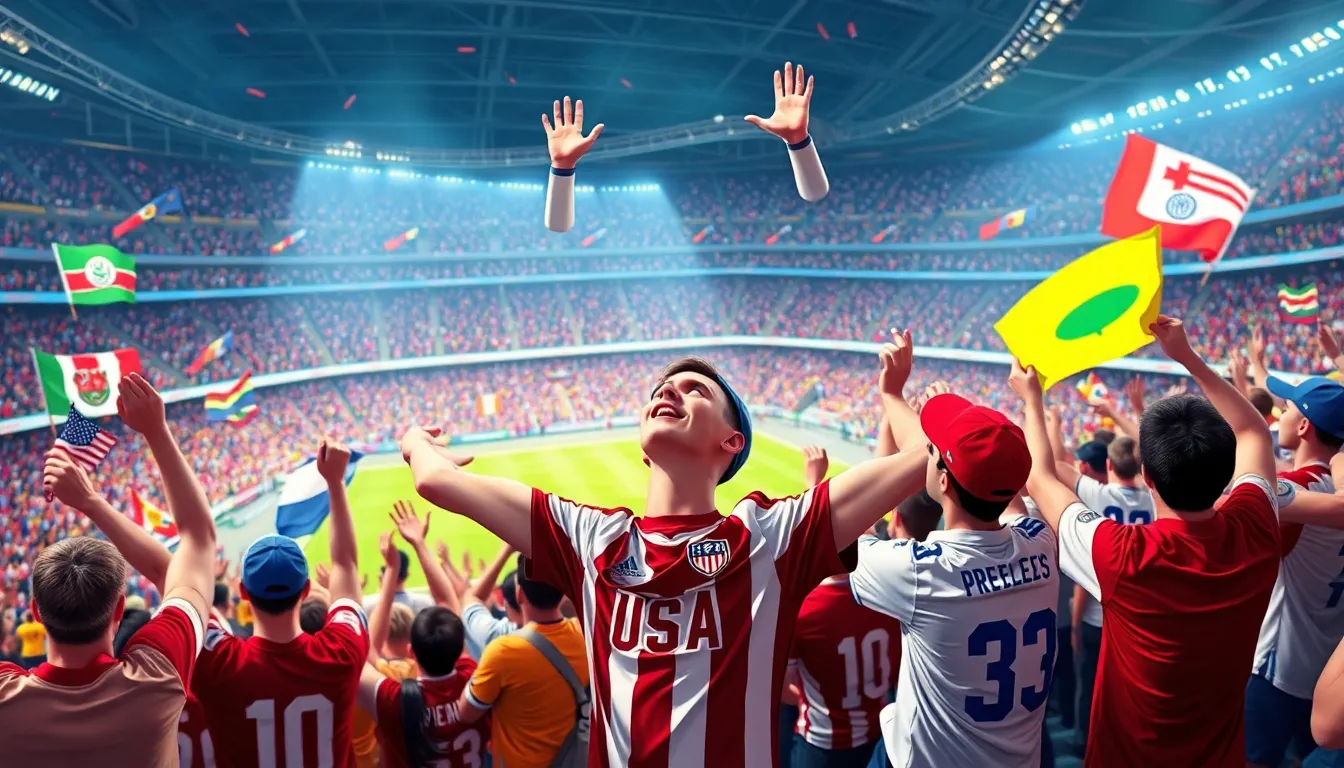In the world of soccer, two giants stand tall: FIFA and FC. One’s the governing body that keeps the beautiful game running smoothly, while the other’s the heart and soul of clubs that fans adore. It’s like comparing a referee to a star player—both crucial but with very different roles.
As they clash in the arena of opinions, fans often find themselves caught in the middle, debating who truly deserves the crown. Is FIFA just a money-making machine, or does it play a vital role in the sport’s integrity? And what about FC? Are they the real heroes or just overhyped brands with flashy jerseys?
Table of Contents
ToggleOverview of FIFA and FC
FIFA and FC play pivotal roles in the world of soccer, each influencing the sport in distinct ways.
What is FIFA?
FIFA stands for the Fédération Internationale de Football Association. This organization governs international soccer, overseeing major tournaments such as the World Cup. Founded in 1904, FIFA’s mission includes promoting the game and ensuring it is played fairly worldwide. The organization establishes rules and regulations for competitions and works to develop soccer on all levels. Its influence, however, faces scrutiny. Critics often highlight potential profit-driven motives that may compromise the sport’s integrity.
What is FC?
FC refers to football clubs that compete in various leagues and tournaments. These clubs showcase talent and draw passionate fanbases, forming an essential aspect of soccer culture. Organizations, such as FC Barcelona and Manchester United, enjoy global recognition. Each club has a unique identity, mission, and set of traditions that contribute to their communities. Fans often view clubs as local heroes, representing pride and loyalty, while debates arise about their branding and commercial interests.
Historical Context

FIFA and football clubs, referred to as FC, have defined the landscape of soccer. Their histories reflect significant developments that shaped the sport.
The Formation of FIFA
FIFA came into existence in 1904, created to unify soccer under a single governing body. Initially, it included only seven founding nations: France, Belgium, the Netherlands, Denmark, Switzerland, Spain, and Sweden. Over the years, FIFA expanded its reach, currently representing 211 national associations. Major tournaments such as the World Cup emerged, solidifying its global influence. FIFA’s mission focused on promoting fair play while encouraging the growth of soccer worldwide. Its early years emphasized collaboration, but financial motivations increasingly dominated discussions.
The Development of Various FCs
FCs evolved through local clubs and organized leagues, with roots tracing back to the late 19th century. Key teams like FC Barcelona, formed in 1899, highlighted the importance of regional identity and pride. Clubs began to establish rivalries, creating excitement that fueled fan engagement. By the 20th century, the establishment of leagues such as the English Premier League and La Liga showcased talent on an international stage. Success on the field led to commercial partnerships, amplifying branding efforts. Fans now associate FCs with cultural heritage and local communities, driving loyalty and passion.
Structure and Governance
FIFA and FCs operate within distinct structures, each vital to the sport’s ecosystem.
FIFA’s Organizational Structure
FIFA consists of a president, a general secretary, and various committees managing different facets of the game. The organization functions through six continental confederations, including UEFA and CONCACAF, overseeing competitions within their regions. Each confederation maintains autonomy while aligning with FIFA’s broader objectives. Membership includes 211 national associations, each represented on the FIFA Council, which leads decision-making processes. Restructuring in recent years aimed to enhance transparency and governance. Financial strategies increasingly attract scrutiny, yet FIFA’s role in organizing the World Cup underscores its global influence.
How FCs Operate
Football clubs function as independent entities driven by competition and community engagement. Club ownership varies from private individuals to large corporations, impacting financial management and strategic direction. League structures govern competition; they can be domestic like the Premier League or international like the UEFA Champions League. Clubs engage in player transfers, sponsorship deals, and merchandising to generate revenue. This business model fosters brand loyalty and converts passion into profit. Clubs host matches that enhance community identity and foster rivalries, drawing fans into their unique narratives.
Competitions and Events
FIFA organizes major tournaments that define international soccer. The FIFA World Cup stands out as the pinnacle, occurring every four years since 1930, showcasing the top national teams. The tournament garners global attention, with millions of fans following matches. Beyond the World Cup, FIFA oversees other competitions, including the FIFA Confederations Cup and youth tournaments like the U-20 World Cup. These events promote player development and international camaraderie among nations.
Clubs also engage in numerous competitions around the world. Domestic leagues such as the English Premier League and La Liga attract top talent, resulting in fierce rivalries. Additionally, the UEFA Champions League represents the elite European tournament, featuring the best clubs competing annually. Success in these competitions enhances club prestige and revenue through sponsorships and broadcasting rights. Participation enables clubs to build loyal fanbases while supporting local communities through matches and initiatives.
Impact on Football
The impact of FIFA and football clubs significantly shapes the global game and local communities.
FIFA’s Influence on the Sport
FIFA plays a crucial role in setting the rules and standards that govern international soccer. It organizes major tournaments like the FIFA World Cup, gathering millions of viewers and generating substantial economic activity. FIFA’s efforts in promoting fair play and developing the sport across continents remain essential. Through competitions like the FIFA Confederations Cup, it boosts player exposure and international collaboration. Although financial interests sometimes overshadow organizational objectives, FIFA’s governance influences growth opportunities and reforms aimed at transparency. Improved management structures within FIFA continue to impact various levels of the sport, defining the relationship between national associations and clubs.
The Role of FCs in Local Football Communities
FCs serve as the backbone of local football culture, cultivating passionate fanbases and regional pride. By competing in domestic leagues, clubs like FC Barcelona and Manchester United reinforce community identity through shared experiences. Clubs contribute to local economies by generating jobs and engaging fans in community events. They serve as platforms for young talents, offering pathways to professional football. Sponsorships and partnerships enhance their financial stability while fostering a sense of belonging among supporters. Additionally, rivalries spark excitement, driving fan engagement and loyalty. Football clubs embody cultural heritage, linking families and generations through a shared love for the game.
The dynamic between FIFA and football clubs continues to shape the landscape of the sport. While FIFA’s influence as a governing body is crucial for maintaining standards and organizing prestigious tournaments, the heart of soccer lies within the clubs that foster community and passion. Fans remain divided on the priorities of each entity. As the game evolves, the relationship between FIFA and football clubs will likely define the future of soccer, balancing financial interests with the integrity and spirit of the sport. The ongoing dialogue among fans will play a significant role in determining how both FIFA and clubs adapt to meet the needs of the global soccer community.







